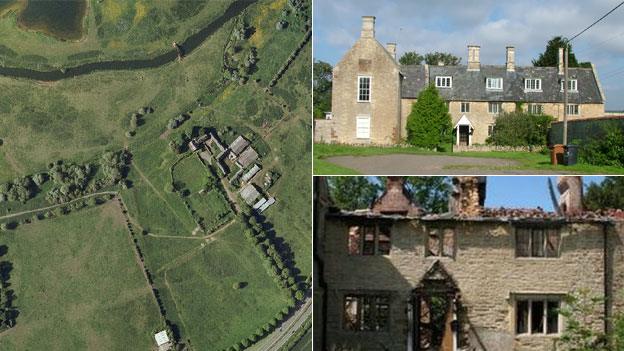Tiles linked to royal romance among Northamptonshire's returned finds
- Published
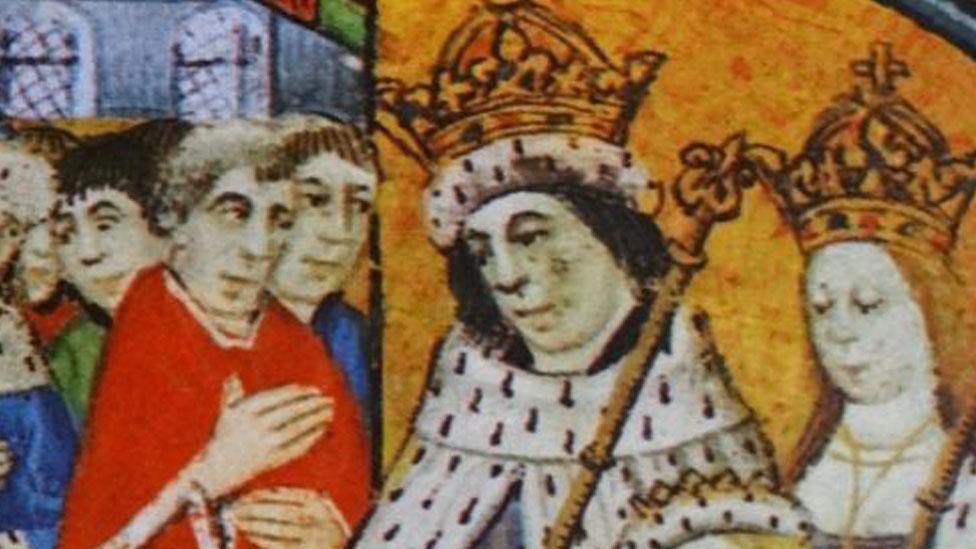
Yorkist king Edward IV married Lancastrian widow Elizabeth Woodville - an event later commemorated with a tiled floor
A Bronze Age spoon and medieval floor tiles linked to a royal romance are among thousands of archaeological finds that have returned to a county.
The Northamptonshire Archaeological Resource Centre (Arc) opened in 2021 at Chester House Estate, near Irchester.
It has received about 21,000 boxes of artefacts from 90 places around the UK so far.
Curator Ben Donnelly-Symes said now they were accessible, research could be done to "unlock" more of their stories.
"Many of the locations where these collections were previously stored were not suitable including agricultural barns, cricket pavilions and sheds," he said.
"Now they are in a store that is perfect for their long-term storage and will now be accessible for future generations."
A clandestine royal romance
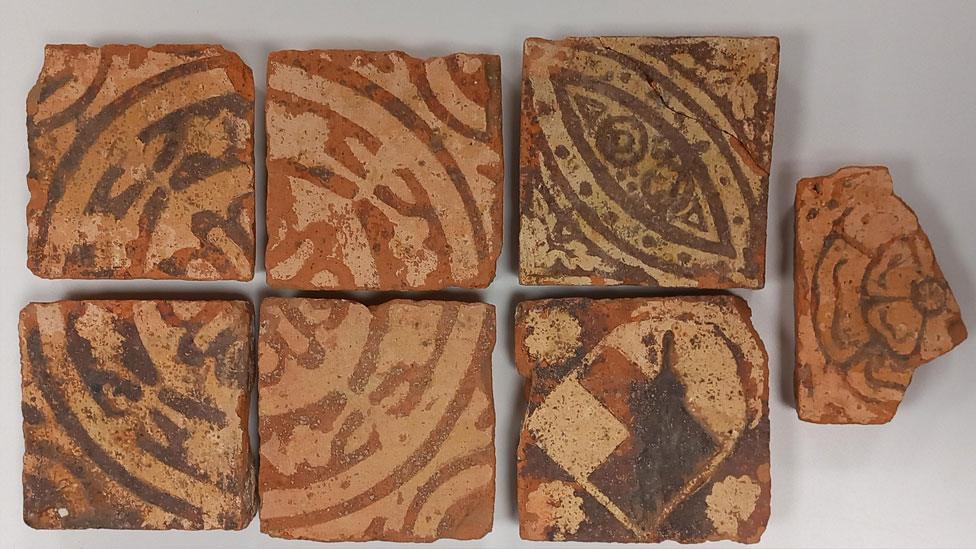
The tiles show the shield of the Woodville family (bottom row, third along) and the White Rose of Edward IV's house (far right)
The Yorkist king Edward IV won the throne of England in 1461, external following the Battle of Towton. This was during the Wars of the Roses, when the crown moved between two factions called York and Lancaster.
He was expected to forge a royal alliance by marrying a foreign princess. Instead, he fell for the Lancastrian widow Elizabeth Woodville and married her in secret in 1464, infuriating key allies.
Mr Donnelly-Symes said: "The exact location of the wedding is uncertain, but one theory is that the marriage may have taken place in Grafton Regis - perhaps the only village in Britain that can lay claim to a royal wedding."
Several tiles excavated between 1964 and 1965 at Grafton Regis Hermitage Priory depict the shield of the Woodville family and the White Rose of the House of York.
"It is likely that the decorative floor was laid to commemorate the marriage of Elizabeth Woodville to Edward IV," he said.
The UK's oldest complete spoon?
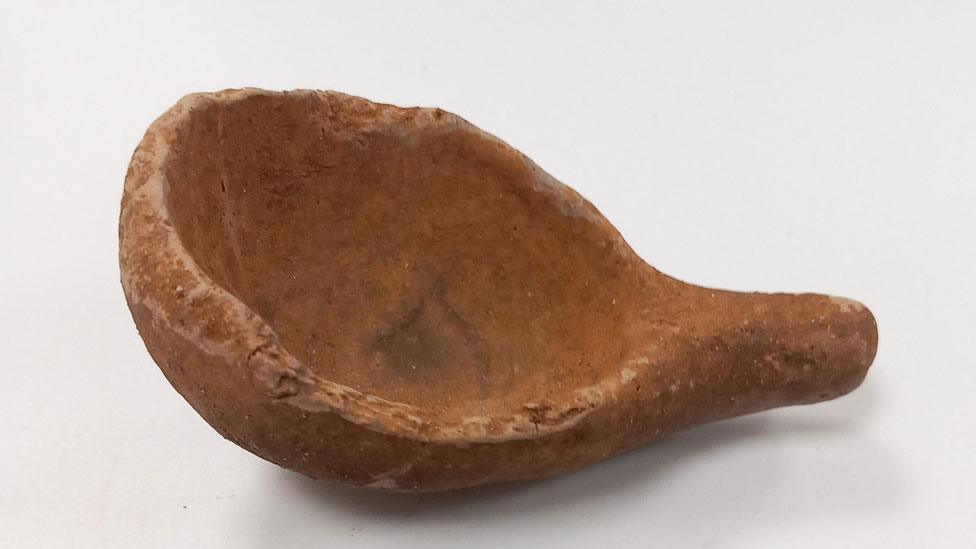
Analysis suggests the 4,000-year-old spoon was mostly used by a right-handed person
This ceramic spoon was a poignant find - discovered within a pot containing the cremated remains of a young person aged 11 or 12.
It dates to between 1970 and 1740BC and is "one of the oldest complete spoons ever found in the UK", said Mr Donnelly-Symes.
The Bronze Age utensil was found during excavations at Middleton Cheney in 2012.
Mr Donnelly-Symes said: "The specialist who analysed the spoon suggested the damage on the rim of the spoon may indicate it was used to scrape out food, and the pattern of damage indicate it was mostly used by a right-handed person."

Ben Donnelly-Symes said the archive was accessible to all, with free tours available to people who booked ahead
The ARC is a part of North Northamptonshire Council and also stores archaeological archives on behalf of West Northamptonshire Council.
The finds come from 4,000 sites and it is the first time the entire county's archaeological collection has been placed under one roof.
It is based at a £14.5m Chester House heritage site, near the site of a walled Roman town.
Mr Donnelly-Symes said it provided "a state-of-the-art climate-controlled facility" and free tours were offered, provided people booked ahead, external.
Unlocking the story of an Anglo-Saxon brooch
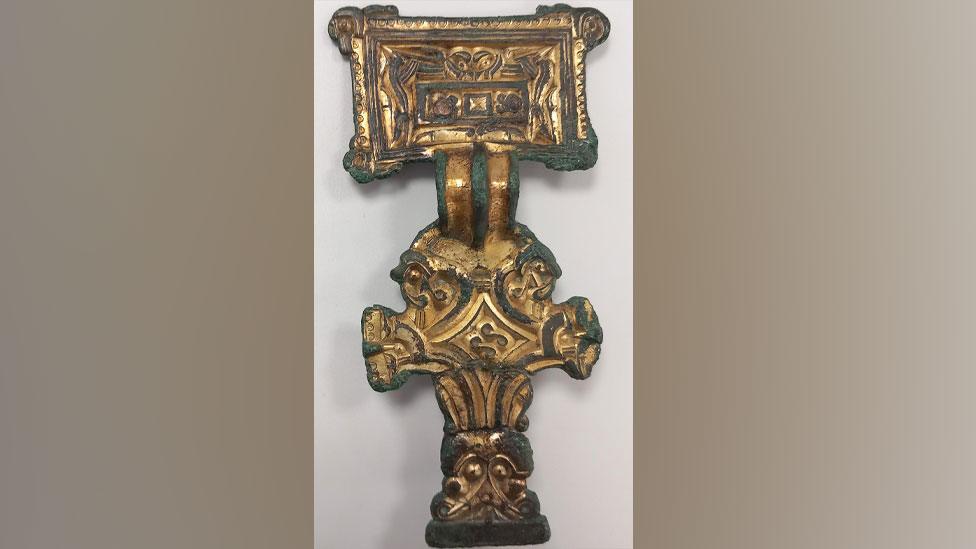
A dig at Wakerley discovered 85 burials in 72 graves, with more than 70 brooches among "a wealth of other grave goods"
This beautifully decorated gilded brooch, discovered in the late 1960s in an Anglo-Saxon cemetery at Wakerley, has a short, runic inscription lightly scratched on its back.
Mr Donnelly-Symes said: "A researcher from the University of Oxford visited earlier this year and interpreted it as a female personal name, possibly abbreviated, which may have been the name of its owner who it was buried with.
"It shows the stories that research into these objects can still unlock now they are accessible."
The early 6th Century brooch was designed to be worn on the shoulder.
Ancient - but not high art
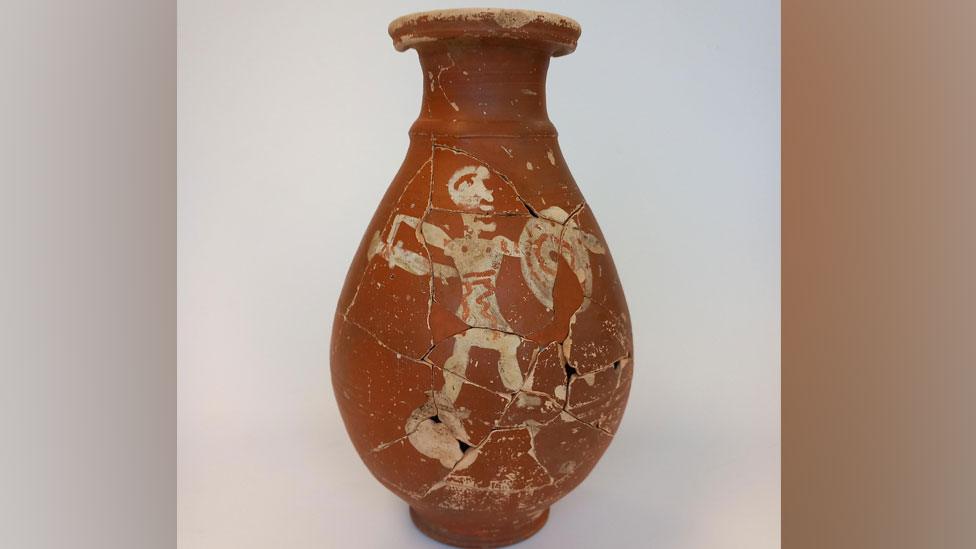
The reconstructed Lower Nene Valley Colour Coated Ware pot dates to the late 3rd to early 4th centuries
Originally made near Peterborough, a Roman pot was found in a well during an excavation at Stanwick between 1984 and 1991.
It is believed to depict a gladiator because of its near-naked body, loin cloth, greaves, crested helmet and short sword.
"It is my favourite object that we have received at the ARC as it shows that not all ancient objects are works of high art - personally, I find it very relatable," he said.
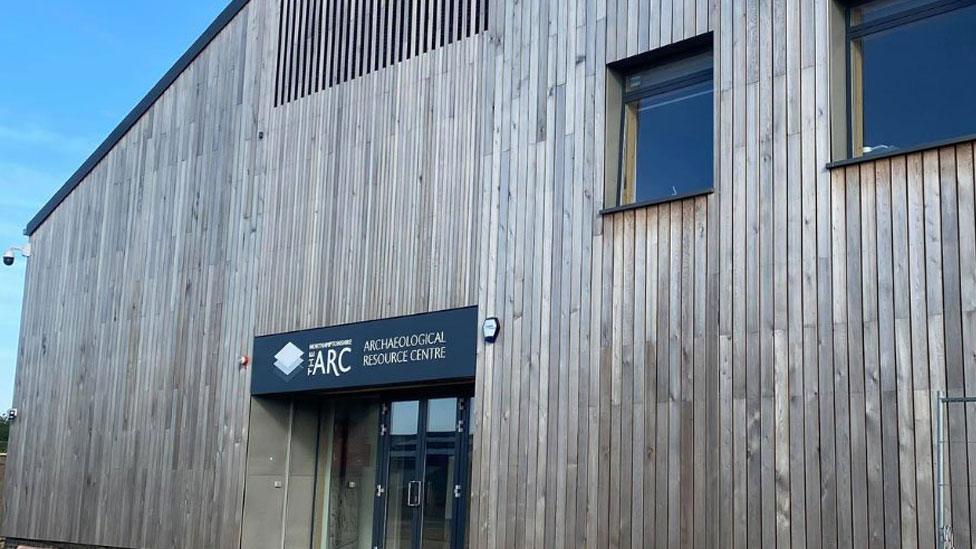
More than 3,000 boxes of artefacts are still due to arrive at the "state-of-the-art climate-controlled facility", which will be home to future finds too
So far, 102 people have given 6,500 hours volunteering with ARC staff, helping them catalogue the items as they return from stores.
"About 70% of the artefacts need some sort of repacking and changing of their storage boxes, which might have mould on them - or items need to be washed as they came off site in the 1960s and weren't washed then," said Mr Donnelly-Symes.
More than 3,000 boxes of artefacts are still due to arrive - and the store will also be the home of future finds.

Follow East of England news on Facebook, external, Instagram, external and X, external. Got a story? Email eastofenglandnews@bbc.co.uk, external or WhatsApp 0800 169 183
- Published22 October 2023
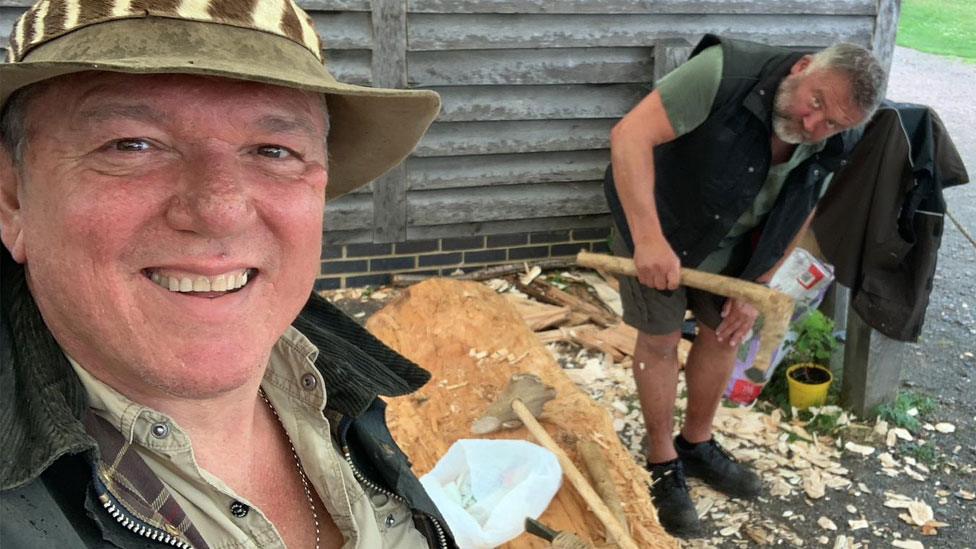
- Published20 July 2022
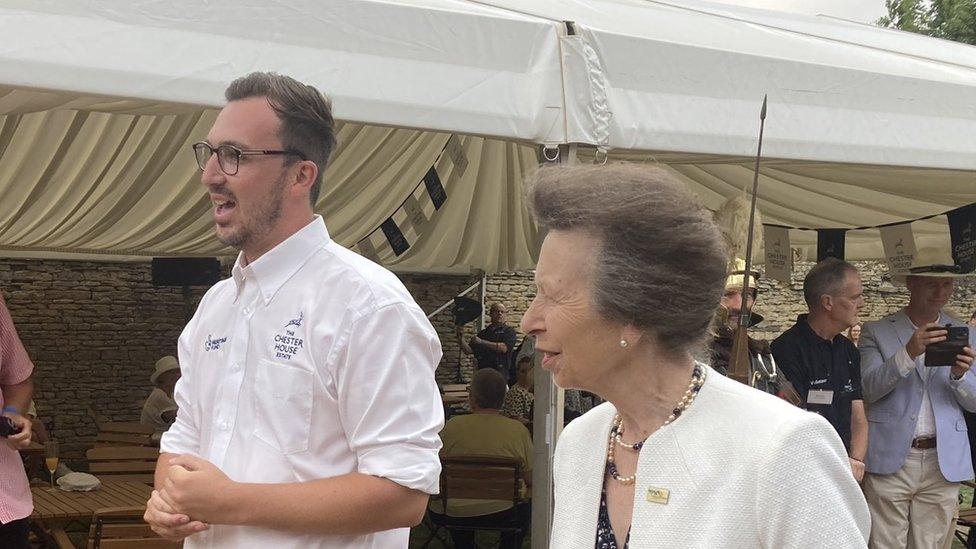
- Published23 October 2021
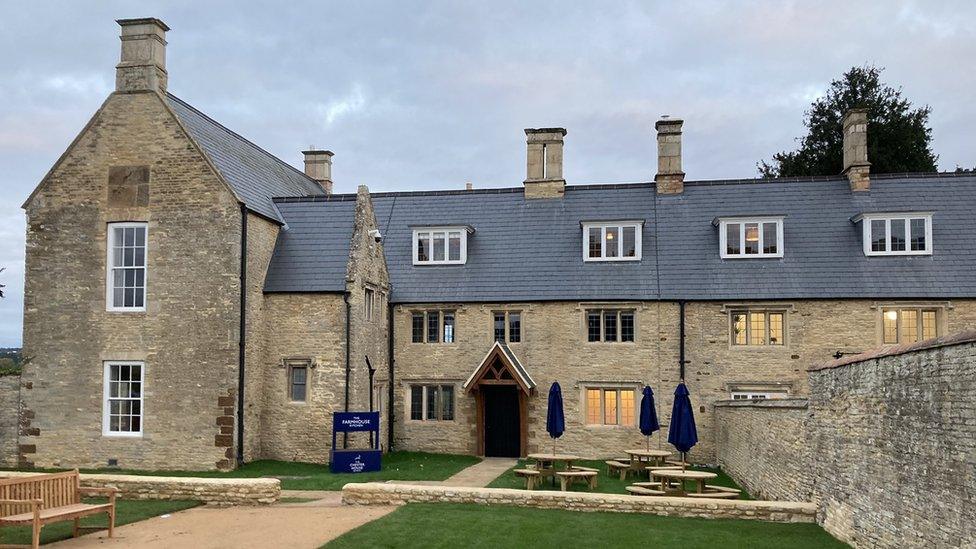
- Published30 July 2013
